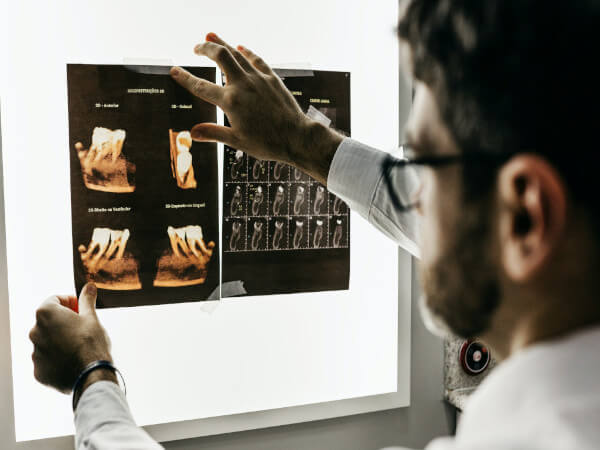
LEIPZIG, Germany: COVID-19 infections have increased dramatically in many countries—particularly in Europe—as the northern hemisphere inches towards its second pandemic winter. Third-quarter results of major dental manufacturers, however, suggest that dental markets have learned to live with the disease. Patient volumes may not have reached pre-pandemic levels, but sales have, and they no longer seem to hinge on low rates of infection.
COVID-19: Study shows benefits of local exhaust ventilation in dental settings
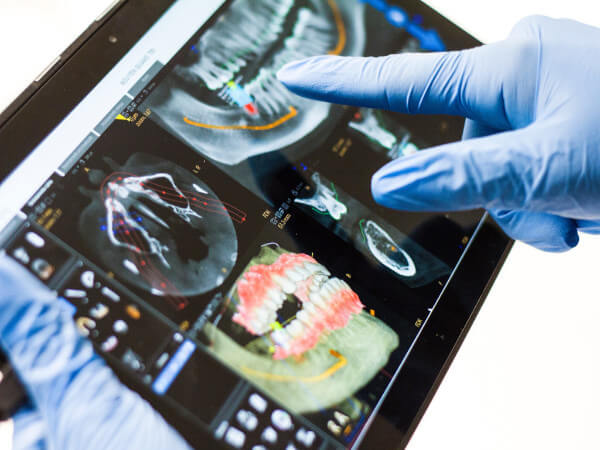
NEWCASTLE, UK: One of the main ways in which SARS-CoV-2 is communicated is through airborne respiratory droplets—droplets that can be dispersed as a result of dental procedures. In a new study, researchers from Newcastle University have examined the applicability of local exhaust ventilation (LEV) systems for controlling the dispersion of these droplets and aerosols and found that they could be quite valuable for this purpose.
Did you miss our previous article…
https://dentistintulum.com/?p=326
Nexa3D partners with 3D DDS to distribute 3D-printing technology to dentists and laboratories
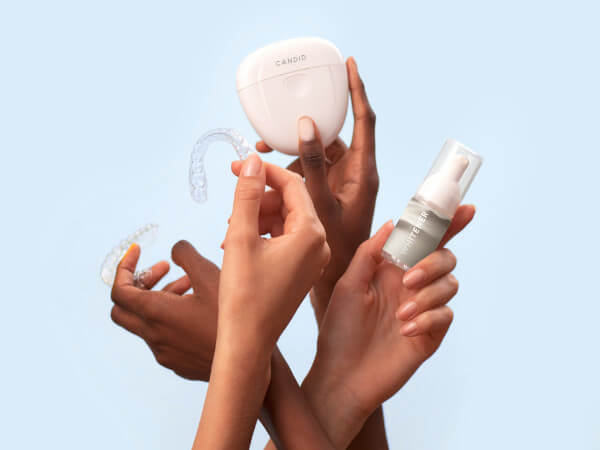
VENTURA, Calif., U.S.: Dental professionals can now make the most of Nexa3D’s portfolio of ultrafast polymer 3D printers owing to a new reseller partnership between the company and 3D DDS. The latter is a leading dental distributor of digital and 3D-printing technologies and supplies and a provider of technical services and training to dental professionals. The two companies say that the development will make ultrafast 3D printing a reality for more dentists and dental technicians.
Did you miss our previous article…
https://dentistintulum.com/?p=324
Exocad releases ChairsideCAD 3.0 Galway software for single-visit dentistry in North America

WOBURN, MASS., U.S./DARMSTADT, Germany: Exocad, an Align Technology company, recently announced the availability of ChairsideCAD 3.0 Galway in the U.S. and Canada. The next-generation CAD software for single-visit dentistry is being showcased by exocad at the 2021 Greater New York Dental Meeting in New York City, being held until Dec. 1.
Separating tragedy and dentistry: What I miss most about dental school
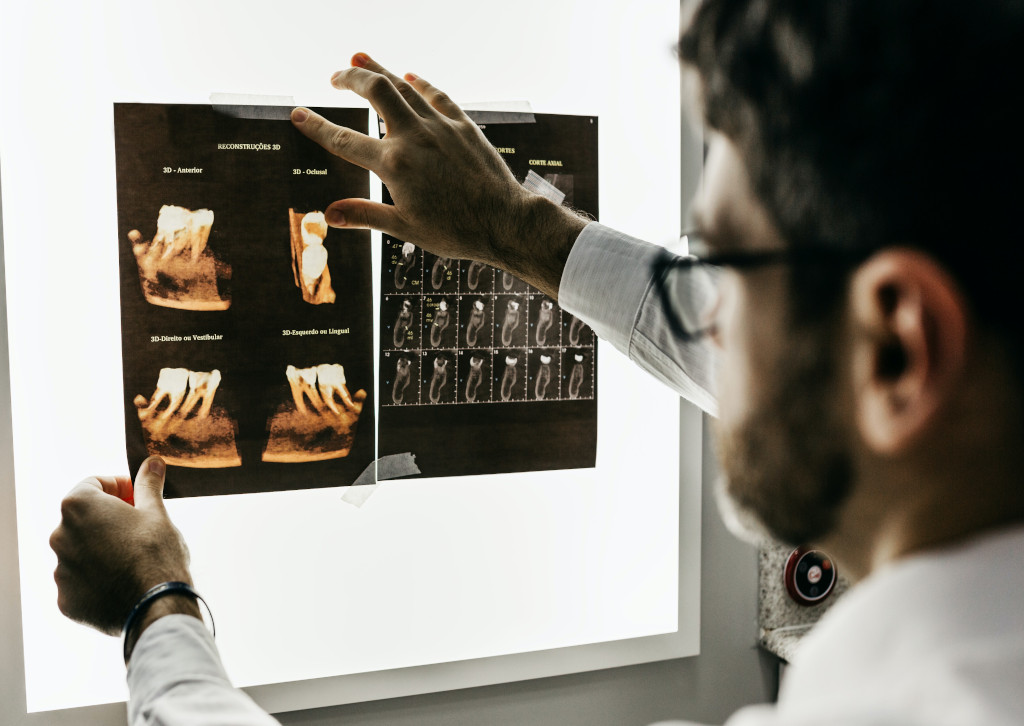
Dr. Simpson, middle, at her white coat ceremony.
Let me start by saying, I hated dental school when I was in it.
My father had been having some undetermined health problems, so when I moved to Boston to attend Tufts University School of Dentistry, in the back of my mind there was some ever-present apprehension about what was going on with him. My father was diagnosed with stage IV kidney cancer and initially given four months to live — two months into me starting dental school.
So professionally, here I was in my first year of high-level graduate education almost a thousand miles from home, and personally, thinking my father was going to die.
Fortunately, he lived for another two and a half years, but he did end up passing away three days after I took part 2 of the NBDE. I think it’s fair to say, no one would be surprised that I hated dental school.
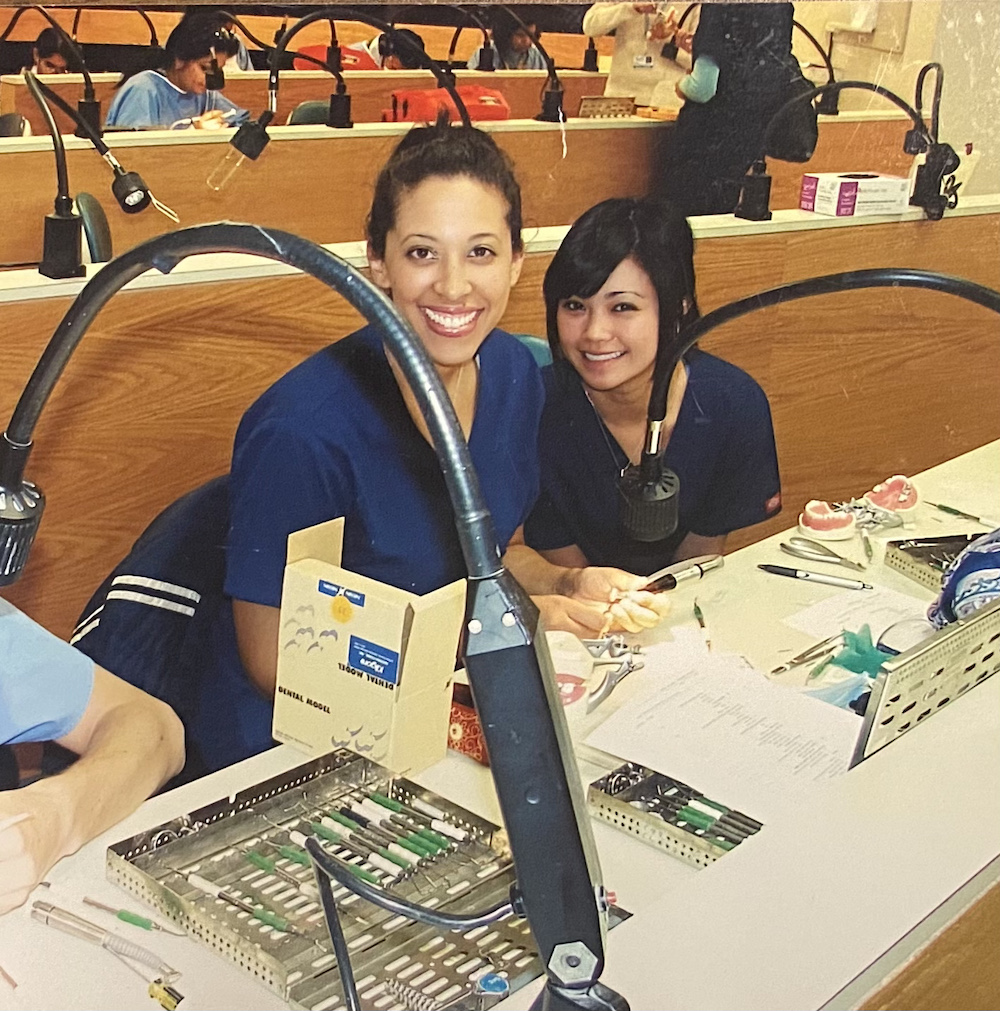
Dr. Simpsion spending time at her dental school’s lab.
When I finally finished requirements and signed out, I felt with all my heart, that I was wasn’t going to practice dentistry. In my mind, my pursuit of dentistry was twisted up with my father’s illness and ultimate death, and I didn’t want to be involved with dentistry in any way.
After a GPR and a couple years of working, the coinciding associations of dentistry and my father’s illness and death began to separate.
It took me five years after graduating before I went back to Boston, which was a lifetime sooner than I ever planned on. On my flight to Boston, serendipitously I got bumped up to first class. It was the confirmation I needed that this was going to be a good trip. The amazing thing was, walking around the city after I took a continuing education course I was there for, all I could remember were the good times: waking up early on a Saturday to meet one of my friends at Barnes and Noble to have coffee and look at magazines, trying to figure out where we were going to study, trying different cupcake shops, helping one of my friends put together the invitations for her wedding, going to the movies or out to eat, and hitting the town with my friends.
I was surprised at myself because for the first few years out of school, when people asked me how I had liked Boston, my answer, without fail was “I hated it.” I would then explain about dad getting sick and passing away while I was in school there.
To be able to walk around Boston and feel nostalgia for a place that had for so long would cause me to give a knee jerk response of disgust, was a relief. They say time heals all wounds, but in my case, time gave me the space to separate my dad’s illness from dentistry. It gave me time to have perspective and start my career and find things that I truly enjoy about it, and have my career give me things when I felt like its pursuit had taken so much.
While I like to think that my situation was unique, it was a trying four years for all of us in various ways. We were all in the trenches together, studying maniacally, trying to memorize things like the anatomy of the Loop of Henle, how to tell an eosinophil from a macrophage under a microscope, how many ATP came from the TCA cycle, and frantically trying to get all of our clinical requirements completed. I can still see the look on friends’ faces as we told each other things like “I still haven’t done any arches of dentures!” Or “I have GOT to get done by August or they are gonna make me come back!” “My job wants me to start July 1st but I don’t know if I’ll be done!”

Dr. Simpson and her dental school classmates and friends during a ladies night out in Boston.
At the time it all seemed so dire, and we were all so desperate to be done and start with real life.
Now that it’s over and some years have passed, I am able to look at that time fondly. None of my friends in school were married or had kids yet, so we were just “kids” out running the streets, and our only responsibility was to learn how to become a dentist. Our weekends were filled with HOURS of studying and lab work, followed by frenzied dancing (and drinking for those that drank – I didn’t) at bars and clubs to let our minds be free of the endless stressors of daily life as dental students.
I never would have thought I would be the one to say there are things about dental school that I miss. We were all in a rush for it to be over but looking back, those harried times studying and completing requirements and being with my friends, are some of the most special of my life.
Dr. Elizabeth Simpson is a New Dentist Now guest blogger. She grew up in Indianapolis and graduated from Tufts University School of Dental Medicine in 2010. Liz is a general dentist working full time for two Federally Qualified Health Centers in Anderson and Elwood, Indiana. She is a member of the American Dental Association Institute for Diversity in Leadership program and has started a toothbrushing program at an elementary school in Indianapolis. When she’s not working she enjoys reading, going to the movies, traveling and spending time with her family and friends.
Business side of dentistry: The two most overlooked pieces of technology in your office
Editor’s note: This is the eighth article in a series exploring the business aspects of the dental profession, from starting a practice and marketing to hiring staff and finances.

Dr. Deshpande
A lot of us are thinking of buying a CEREC system in our brand-new office, hoping it make things efficient. We also consider getting the fanciest massage chairs for patients to use. You know what most patients really care about? Being attended to in time and being appreciated and cared for by our staff. Read below to read about two technologies that are already in every office but may not be used to their maximum advantage.
Phones
Did you know that many phone calls get missed by an average dental office? Did you know the most common time patients call to schedule appointments? Do you know what it costs for you as a practice owner to not know the above numbers?
Many practices spend a lot of money on marketing and getting the “right patient” in the door. Most patients will first check your online presence: your website and read your bio, then they check reviews, and finally, they’ll pick up the phone call and make an appointment. What if nobody picks up the phone on the other side? What if the patient leaves a message and does not even have it returned?
Guess what, by the time you figure out what happened, that patient called up another office and has an appointment on Monday.
What gets tracked, gets done. Consider having a phone tree — to have phones directed to the right person in your office — so the phone isn’t tied. Insurances, emergencies or billing, are three possible categories in a phone tree. Do you know which category will have the longest call?Invest in a software that allows you to record each phone conversation (check if your state allows it first), transcribe VM’s, and that helps you audit your front office member’s personality. It is so important to have someone cheerful and happy answer new patient calls.Make sure there is someone manning the phone at all times. Like most of our patients, I too, frequently make appointments for my chiropractor, personal physician and dentist during my lunch hour — 12-1 pm, on a weekday!Maybe you couldn’t pick up the phone. Fine. Ensure your scheduler reviews all VM’s at the start of the next day and gives everyone a call back. They should do the same for all no shows, or late cancels too.
Scheduling
Ever thought of your perfect day in dentistry? It actually does exist. Every dentist has a different way of doing things, and the great thing about this is that in most scheduling systems you can input your own specifications. I, for example, like to complete root canals, implants or fillings at the beginning of the day, extractions right before lunch, and new patient exams or child prophies at the end of the day. One of my pet peeves is a quadrant filling at the end of the day. Figure out what is your way of doing things and tell your front office how you’d like them to schedule for you. This is your office after all.Many business gurus agree that providers shouldn’t have unnecessary breaks in the day. While I agree with this thinking, it does not have to apply to everyone. Paint your own perfect day and try to make each day amazing.One of the front office managers I used to work with told me that the thing that annoys them the most is inconsistency and lack of instruction from the dentist. “Why don’t they just tell us how they like it? They only complain when it’s not done right.” Every single person in the office wants their dentist to succeed. In order for them to help you, you just need to give them more information.
Can you think of another important aspect of a practice? Team appreciation, bonus structures and outsourcing are other key elements. Join our New Dentist Business Club meetings where we go into detail in all of those. To join, email us at [email protected].
Dr. Sampada Deshpande is a general dentist based in San Francisco. A foreign trained dentist from India, Sampada earned her DDS from the University of Washington in 2018 and is a 2020-2021 UW-LEND fellow. Outside of clinical dentistry, she enjoys teaching at the New Dentist Business Club and improving access to technology in healthcare via her involvement in Samsotech. You can reach her directly at @dr.deshpande on Instagram or visit her website www.sampadadeshpandedds.com for more information.
Editor’s note: We know that finding the right practice can be overwhelming and time consuming. That’s why the ADA created ADA Practice Transitions (ADAPT), a service that matches you with practices that fit your practice approach and lifestyle. We provide customized resources to ensure you feel confident in your decisions and an ADA Advisor supports you during each step of the journey. Learn more at ADAPracticeTransitions.com.
Looking for ways to increase access to care? Consider GKAS
The ADA’s Give Kids A Smile program has been my gateway into public health as well as an avenue to leadership within the ADA. Like many others, I first learned about GKAS during dental school, where the event was held annually.
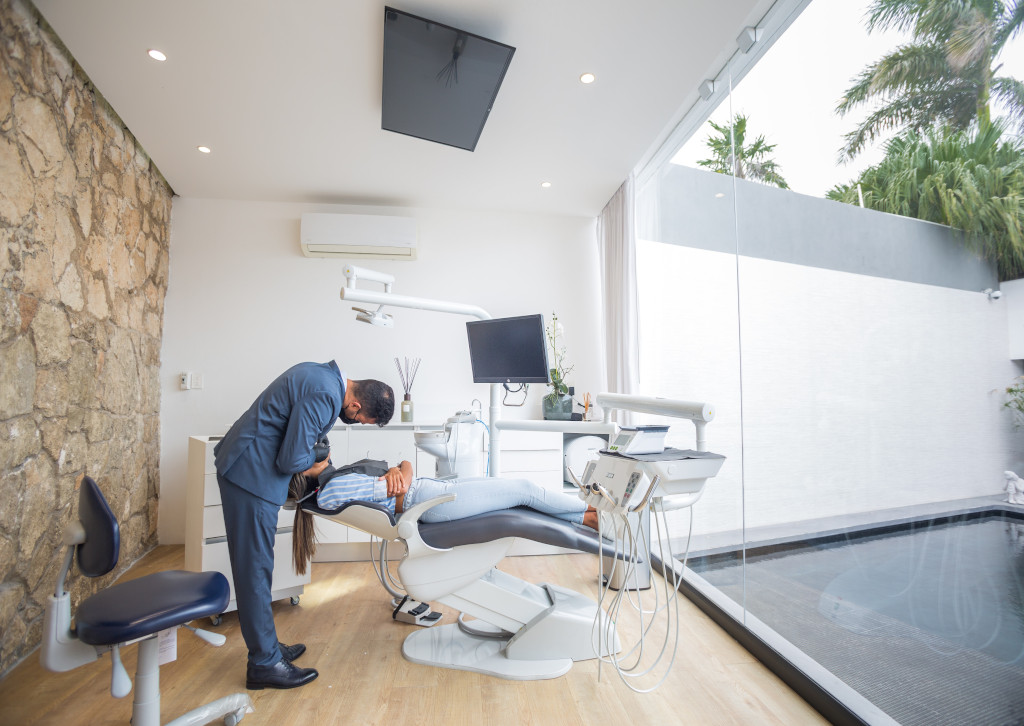
Dr. Smeenge
It was a fun-filled day of free pediatric dentistry, identifying and addressing treatment needs for children who otherwise were not receiving care. As a University of Michigan dental student, it gave me a chance to learn more about pediatrics, while giving back to the community. During my D2, D3, and D4 years, I joined the dental school leadership team to help plan the event. Then as a pediatric resident, I oversaw patient care and enjoyed teaching the dental students.
In 2015, as a D3 student, I had the opportunity to attend the ADA’s GKAS Community Leadership Development Institute. Selected GKAS program coordinators from across the U.S. shared their experiences, learned from each other’s strengths and weaknesses, and ended the program by participating in the St Louis GKAS clinic event — the one that started it all.
Dr. Jeff Dalin and his team are truly inspirational, educating and treating hundreds of children who otherwise would not get dental care due to a variety of health disparities. In 2017, I had the opportunity to join other GKAS Ambassadors in Chicago at the ADA headquarters to once again join forces and find creative solutions to barriers to care and challenges to running a GKAS program.
This led to the opportunity to become the new dentist representative on the ADA’s GKAS National Advisory Committee. Through this position, I am able to share my perspective as a recent graduate and as a pediatric specialist. We develop promotional campaigns and problem solve at the national level. I am grateful to be part of an amazing group of people, who all share a passion for helping children establish a dental home and for equipping general dentists with the knowledge and resources to comfortably screen and treat children.
Some of you may have experience with leadership positions in undergrad or even in dental school, but once you graduate, it can feel like there is so much on your plate, especially in the midst of a pandemic. Can, or rather, should, you add one more thing?
Being on the ADA’s GKAS National Advisory Committee easily fits into my schedule. It gives me a chance to hear other perspectives across the country, and to make a difference at a national level. As someone just starting my career, I appreciate being able to learn from people who have a wide range of backgrounds and experiences.
I highly recommend getting involved at some level, whether that is as a state dental association representative or within one of the many ADA councils or committees. Not only will you be making sure that new voices are being heard, but you will also learn a valuable perspective on how organized dentistry operates. It can feel overwhelming, trying to tackle access to care issues on your own, but organized dentistry allows individuals to come together and make a greater impact.
Most recently, I have been working on Tiny Smiles, a subset of GKAS focused on establishing a dental home for children under age 5. The recommendation for a child’s first dental visit is age 1, due to the increased incidence in caries at a younger age.
However, many dentists may feel ill-equipped to complete a knee-to-knee exam or address active carious lesions on such young patients. We are creating continuing education opportunities to increase comfort levels on this topic. Connecting with your neighborhood pediatricians and getting a child in the door for an exam is the first step. You can then educate parents on hygiene and diet recommendations. If they have treatment needs: refer! Parents who feel comfortable with you for their young child, will recommend you to their friends and family members, it’s a great patient builder!
If you have any questions about GKAS, Tiny Smiles, or getting involved in the ADA at a national level, please don’t hesitate to ask! Information on GKAS and Tiny Smiles can be found on ADA.org/GKAS.
Dr. Betsey Baumann-Smeenge is a pediatric dentist at a Federally Qualified Health Center in White Cloud, Michigan. She earned her dental degree and her masters in pediatric dentistry from the University of Michigan. She is the “New Dentist” representative on the ADA’s Give Kids A Smile National Advisory Committee and is a GKAS Ambassador. She is passionate about making dental care accessible for all children. Feel free to reach out with any questions or comments: [email protected]
Licensure Reform: The case for eliminating the clinical exam
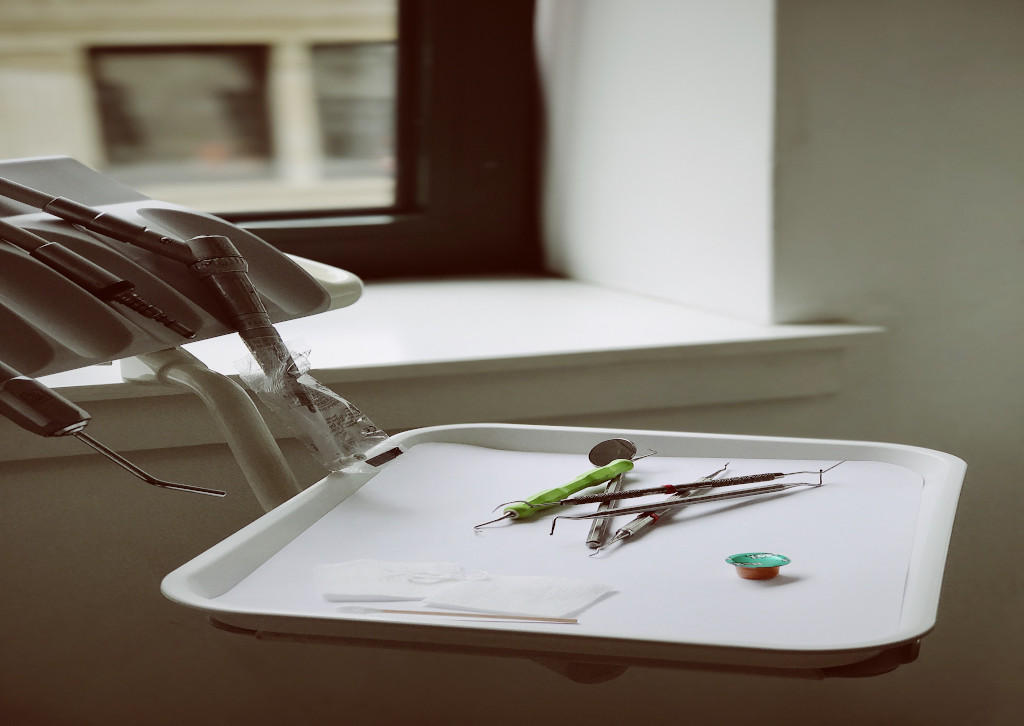
Some may argue that progress has indeed been made in the administration of the licensure exam over the last 50 years given that regional testing authorities have increased from two in 1971 to the current number of five.
Although undoubtedly there has been improvement in the uniformity, the ease of test-taking, and the administration of the examination, the traditional mode of testing essentially remains the same.
That is, dentists and dental students in 44 States still have to endure the single-episode/performance-based high-stakes clinical exam, whether it be on patients or manikins. It is striking (and embarrassing) that our dental profession remains the only health care profession that subjects its candidates for licensure to this mode of testing i.e. M.D.s don’t need to perform surgery, nurses and EMTs don’t need to demonstrate CPR or start an IV, midwives don’t need to deliver a baby, and osteopaths don’t need to perform various manipulations, etc.
The bottom-line is that it has been far too long for our profession to continue to endure such an outdated and unfair licensing process.
Dr. Jonathan Nash, who served as the American Student Dental Association chair of dental licensure reform in 1971, and the founder and chairman of the National Council for Improvement of Dental Licensure 1969-73, examines the state of dental licensure reform today and makes a case for bolder solutions to achieve meaningful reform.
Read the full editorial in the New Dentist News.
Did you miss our previous article…
https://dentistintulum.com/?p=312
Something to be thankful for
As we prepare our hearts, minds, and bellies for the season of giving thanks, I found a symbolic comparison of those English immigrants and refugees to the journey dentists face. The definition of a pilgrim is a person who journeys to a sacred place for religious reasons. In a sense, we are a 21st century pilgrim as we journey for a decade sacrificing our pleasures and time for the opportunity to earn our doctorate in dental medicine. The black robes we wore on graduation day is a legacy of the same cloth worn by clergy in the Middle Ages. The path to medicine is in fact a journey, a pilgrimage. A medical provider/pilgrim, who is entrusted to heal those in their care, is the merger of sacred and science.
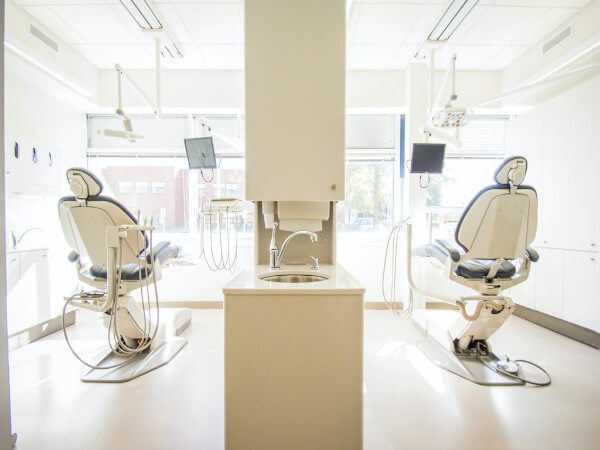
Dr. Norlin
Those pilgrims of old could have stayed in their status quo, not rock the boat of the ruling English elite, or move to Holland that allowed the freedom of religion. Instead they wanted more, their hopes and dreams for something better than their present state. We could have gone down so many different paths, avenues, adventures, but for whatever reasons, opportunities, or influences the world of dentistry was the course we set for our sails.
Just like the pilgrims, we though the grass would be greener, life and work balance easier, and our mental/spiritual would blossom. Those that decided to make that journey to the new world were hit with the brutal reality of failing crops, freezing weather, faminous bellies and funerals of love ones. The dreams of dentistry can seem more like a nightmare with debt, saturation, lower insurance rates, competition, damage to your body, shrinking middle class, COVID-19 and ever more angry patients.
As the pilgrims came to fulfill their personal and spiritual beliefs they were also exposed to mental and spiritual trauma. While we might not be dying of the elements, disease, or malnutrition many of our spirits are crushed. Let’s be honest, Americans and especially the young medical and dental professionals are calling for help with burnout, anxiety, depression, and suicide rates that can be four times the rate of the general population and even twice as high as veterans and armed forces members. In August 2020, the ADA Health Policy Institute conducted a survey on the impact of COVID-19 on dentists under the age of 35. Responses showed that 87% reported experiencing anxiety, 76% reported financial problems and 55% reported experiencing depression. If you are hurting please reach out to someone, especially during this holiday season.
I am sure many of those pilgrims questioned and regretted why they left their familiar homes to a new place that they were told was the promise land. Instead they were tormented with destitute, despair, and death. The fulfillment and hope seemed to crumble into fables and lies. I know of some dentists seeking other jobs and careers outside of dentistry. After the sacrifice to get to this doctorate and new dentists want to leave shows the real challenges this profession faces.
In the autumn of 1621 AD, exactly 400 years ago, the first recorded Thanksgiving took place. After months of hardships and trials, that happy moment must have been a somber moment as well. There were family members whose laughs and smiles would never grace an earthly table, and the survivors still carrying the scars of physical and emotion trauma as they hope for the future.
Even in our best work days, holidays and weekends, we probably can remember those hard days as well, time spent away from loved ones with an ever demanding schedule, the pain in the arms and back, stresses of rising costs, and decreasing wages, the worry of a business or no show that constantly tugging at your mind or even just the mundane of trying to keep a tongue out of the MODBL prep on #18.
To earn a chair on the table of the family of dentistry, the pilgrimage is extensive, laborious, and challenging. It has its blessing, it has its curse. Some of us are excited and glad to be on this table, others may have our regrets and can’t wait to leave and others waiver somewhere in between. But take heart we are still pilgrims drawn to a sacred place seeking wellness to our soul, and each day’s a journey you decide to make. That is something to be thankful for.
*if you don’t have any dentist to talk to about the stresses of our profession, life stresses, etc please feel free to email me at [email protected].
Dr. Casey Norlin is a New Dentist Now guest blogger and went to Oregon Health and Science University. He comes from a rural background and lives in Oregon City, Oregon, with his beautiful wife. Casey works in public health, has been a volunteer firefighter/advanced EMT for Colton Rural Fire District, an assistant professor for OHSU SOD, and is an Army dentist for the ORANG 41st Infantry Brigade. As of now he still hasn’t decided what he wants to do when he “grows up.”
Did you miss our previous article…
https://dentistintulum.com/?p=310
Don’t be afraid of big data
During the first years after I graduated from my first dental school in Iraq in 2009, I had never used to deal with practice statistics, surveys, and digital quality measures. As I moved to other countries where I worked or studied in the dental field, I also did not find many data-driven private practices where I worked at.
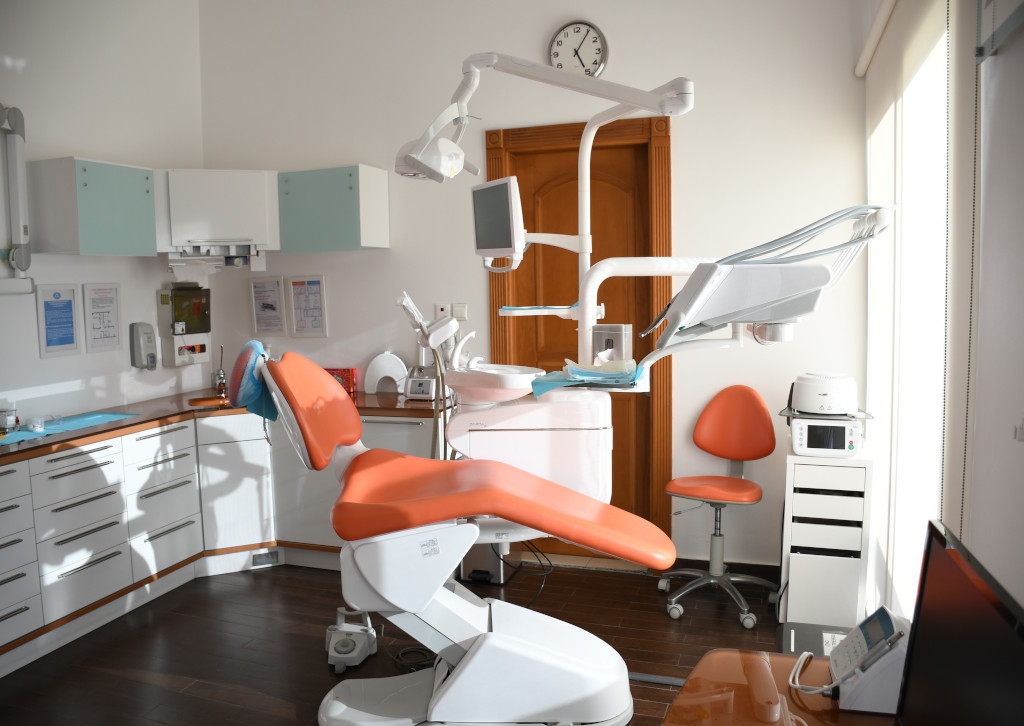
Dr. Al Sammarraie
However, after getting my second dental degree in California and starting my first job in community health care, which involves multiple practices that serve thousands of patients. My new role as a site dental director opened the door wide for me when it came to big data. I realized collecting and analyzing data can tremendously affect the quality of care we provide.
I believe that dentists today should count on incorporating data-driven goals in improving the quality of dental services. The data collected at various points of dental care can be essential for delivering timely and improved care. Clinics could work smarter to improve the quality of dental services while spurring innovation.
With many dental practices adopting electronic dental records (EDR), collecting data about your dental practice and patients are now easier.
When done right—and with the help of office managers and your dental team—data analysis can result in improved quality of dental services as well as practice workflow.
By collecting and analyzing your mass of data held in the EDR, you could help drive improvements in the following areas of your dental practice. Here are some examples on how big data can help:
Improve Population Health
Data can help you identify patients at a higher risk of developing chronic and severe oral diseases. You can then implore them to make an appointment and prevent the danger to the overall systemic health. This will not only improve their health but also reduce the cost of getting quality healthcare.
Reduce Missed Appointments
The EDR can be used to identify the people who are at the most risk of missing an appointment and the underlying reasons.
This ensures that you can follow up on the group and take other measures to understand their reason for failing to show up. Moreover, it ensures that you can maximize the time with the patients that willingly show up.
Real-Time Prevention of Oral Health Deterioration
Analyzing patient data in real-time alongside historical data allows you to identify potential issues that could otherwise get out of hand if not acted upon with urgency. With data analysis, you can take note of the inconsistencies in oral hygiene and prescribe the requisite remedies.
There is no doubt that big data is already affecting dentistry for the better. Data analysis will be vital in ensuring that you improve customer service delivery by working smarter.
Moreover, integrating new dental information with historical medical information for each patient will result in a better understanding of disease patterns. This ensures better preventive measures and improved quality of dental services.
When I started practicing data management and quality metrics, in the beginning, I thought it was easy to achieve a significant increase in any quality metric shortly if you only add more patients. After a while, I realized that things are not easy as they seem. Improving clinical performance and quality productivity needs a lot of work, chiefly understanding your weaknesses, strengths and working hard to invest everyone’s best towards the ultimate goal: caring for patients.
Data showed me trends in many practices that open my eyes to dig into root causes of wins or losses. For example, our sealant metrics met our quarterly defined goals. Still, when I brought all data together (patient ages, erupted, unerupted, partially erupted, or restored teeth, recall-due visits, schedule utilization, and availability). I found that we could do better and more than what we proposed. Such data-driven speculation was a reason for a pilot practice to modify our workflow. We revisited our results after 90 days. The results were outstanding; our metrics showed an 8% increase compared with last year or other clinics that did not establish the pilot workflow. Because of the data, we learned that we could do better than we thought before.
Other examples include treatment completion and cases like dentures or RCTs. With detailed data reports, we tracked our average starting and delivery days. We reviewed our workflow to find the best practices to ensure that our respective patients are getting the best quality treatment on time. Sometimes, a rapid jump in your metrics or a rapid drop indicates a training issue like wrong documentation, incorrect coding, etc. This will allow the clinicians or managers to identify areas of improvement and training.
Having a data-driven mentality, in my opinion, helps achieve quality and productivity at the same time. It will keep the team focus on our mission and be more engaged with the clinical aspect of dentistry. For example, it’s important to understand why dentists care about preventive care, a recall system, continuity of care, and the various treatments.
Do not be afraid of numbers. They do not turn people into statistics; statistics turn patients into healthy people.
Do you think that EMR can be used to improve quality and productivity in solo practices? I would like to learn from your experience in that at private offices. Please DM me at muhalab.ns@gmail or LinkedIn
Editor’s note: For more information on electronic health records, visit the ADA FAQ Index web page.
Dr. Muhalab Al Sammarraie is a New Dentist Now guest blogger. He grew up in Baghdad before coming to the U.S. as a foreign-trained dentist. He obtained his D.D.S. with honors in 2019 and became a member of the A.D.A., California Dental Association, and the San Diego County Dental Society. While working towards his second degree, He accrued remarkable leadership experience working in public, private, and non-profit sectors. He led many departments and oversaw process improvement in education, social services, and community health. Dr. Al Sammarraie is currently a site dental director at AltaMed Health Services, the nation’s largest FQHC. Outside of dentistry, Dr. Al Sammarraie supports activist groups in Iraq that help war victims and displaced people find educational opportunities and medical care.
